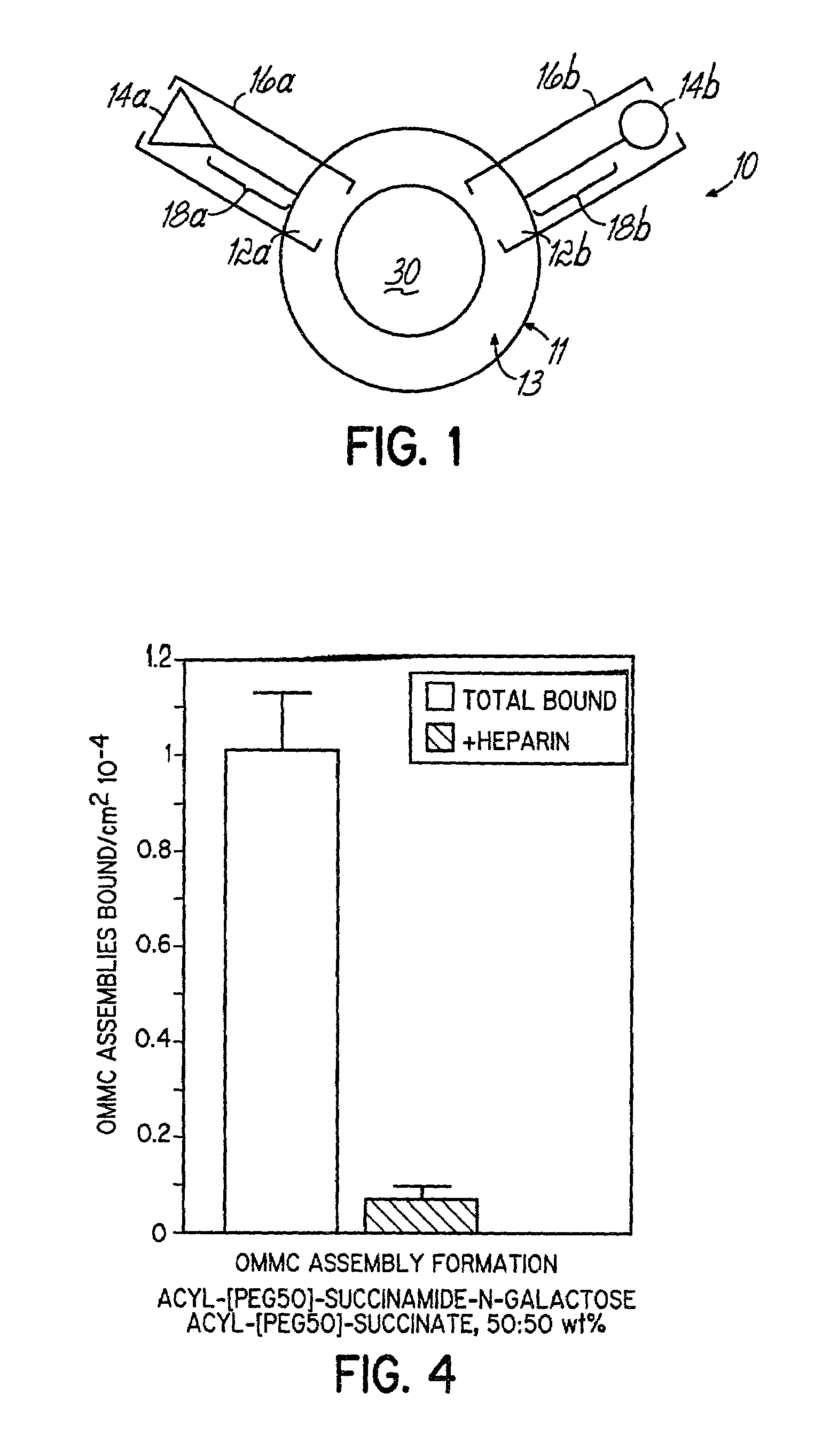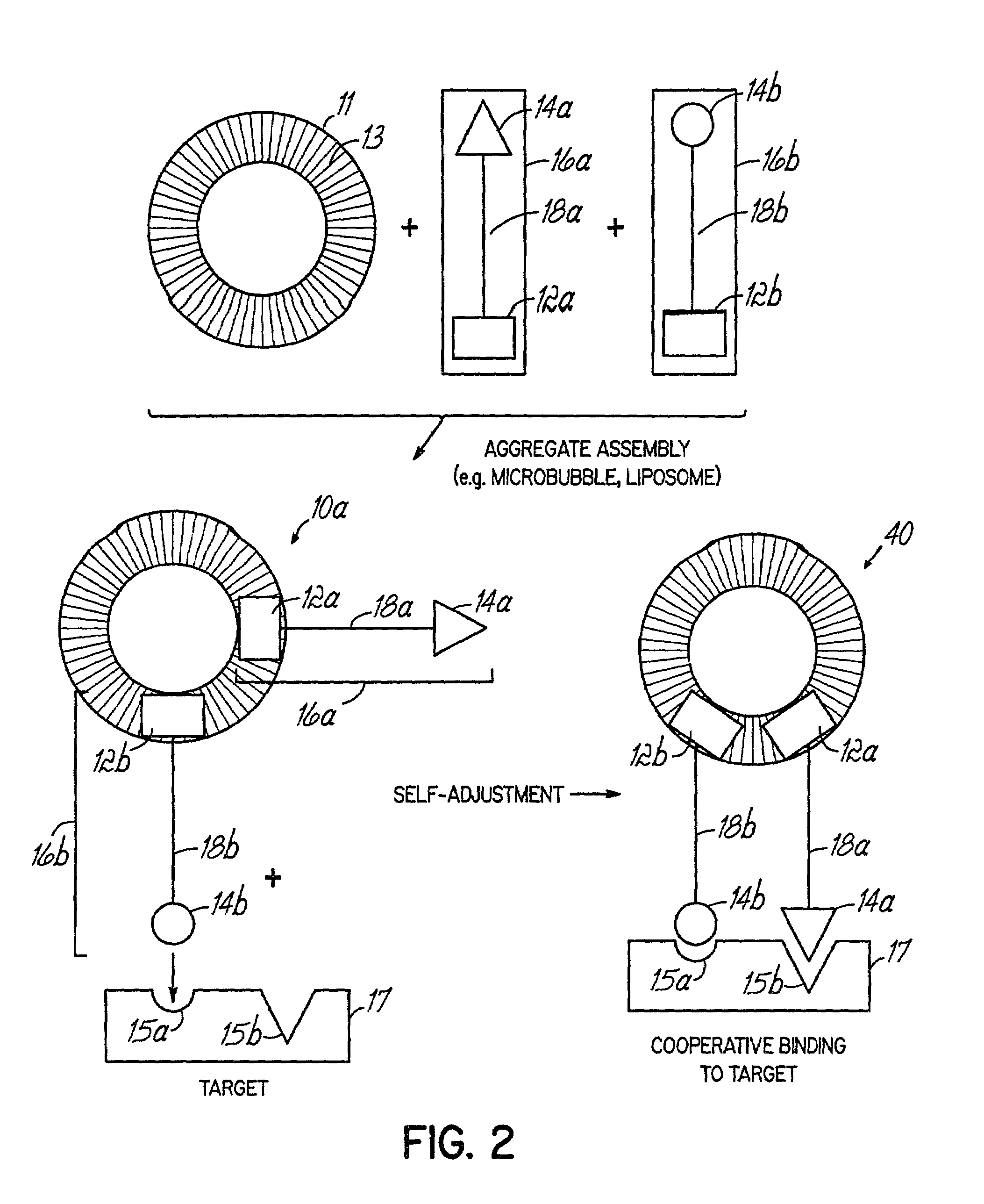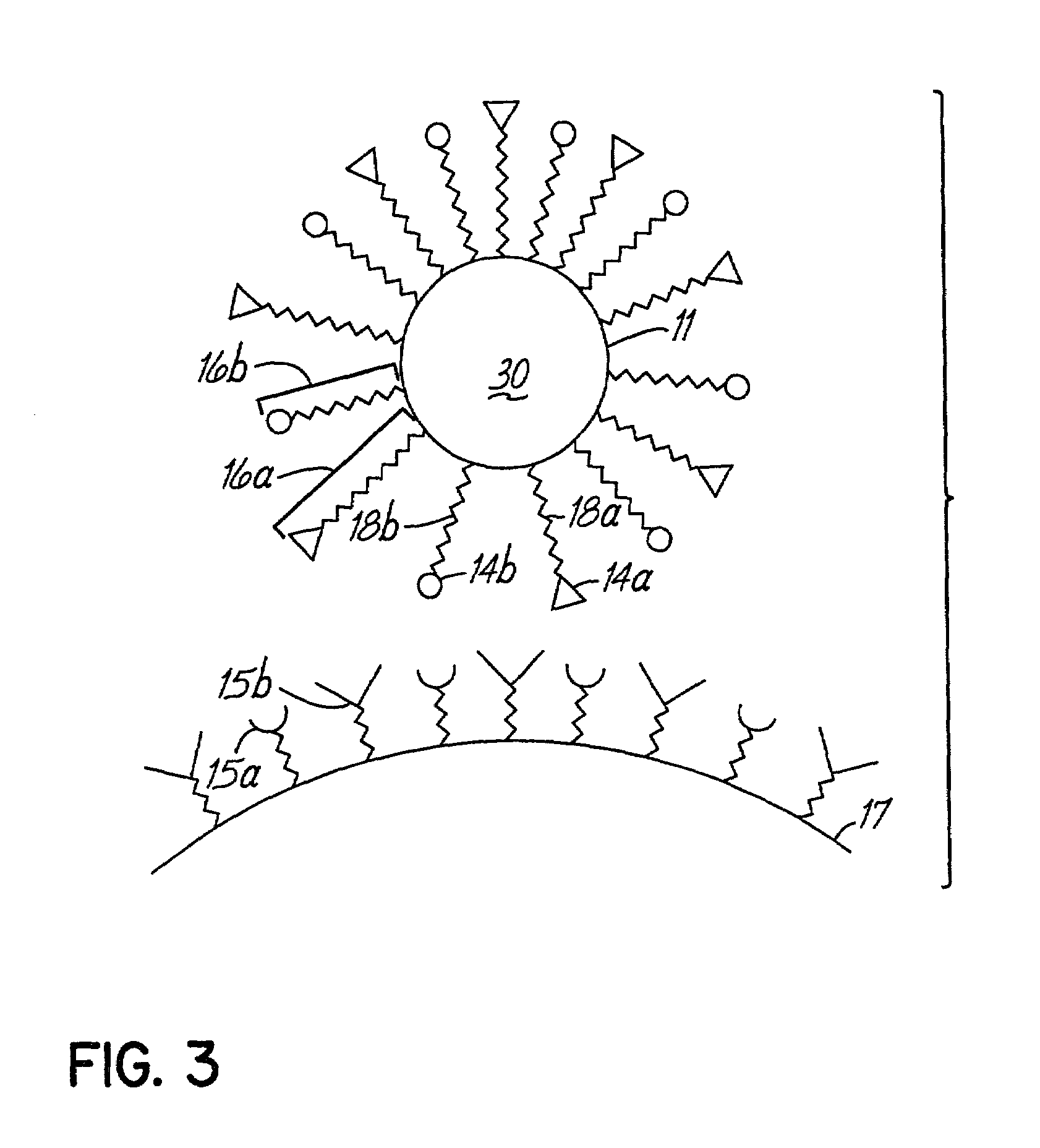Multicomponent assemblies having enhanced binding properties for diagnosis and therapy
a multi-component, diagnostic and therapy technology, applied in the direction of macromolecular non-active ingredients, drug compositions, medical preparations, etc., can solve the problems of weak binding of ligands, weak binding compounds, and generally not considered useful for targeted imaging and therapeutic applications
- Summary
- Abstract
- Description
- Claims
- Application Information
AI Technical Summary
Benefits of technology
Problems solved by technology
Method used
Image
Examples
example 1
Preparation of OMMC Assembly Having One Binding Domain and a Terminal Carboxylate Binding Region, and Containing Gas (Docosanoate (C21CO2—); Octacosanoate (C27CO2—); and Succinylated PEG[100]stearate Formulated with n-Perfluorobutane).
[0048]To an 8 dram (29.6 mL) vial was added docosanoic acid (10.0 mg, Sigma, ˜99%); octacosanoic acid (10 mg, Aldrich, ˜98%) and 22 mg of succinylated PEG[100]stearate weighed on a Mettler® analytical balance. The mixture was dissolved into about 1 mL of dichloromethane (distilled Mallinckrodt Ultimar®) using mild heating. Dichloromethane was completely removed by the application of heat under a flow of nitrogen (Air Products, High Purity Grade). Excess sodium hydrogen carbonate (about 100 mg, Aldrich, ˜99.7%) was placed in the flask along with 10 mL of 0.9% sodium chloride solution used for irrigation (Baxter, USP).
[0049]The tip of the insonation probe, Heat Systems Sonicator® Ultrasonic Processor XL (Heat Systems, Inc., Farmingdale, N.Y.) Model XL 20...
example 2
[0051]Preparation of OMMC Assembly With One Binding Domain and a Terminal Galactosamide Binding Region, and Containing Gas (Docosanoate (C21CO2—); Octacosanoate (C27CO2—); and Octahexadecanoyl[poly(ethylene Glycol) 5,000]Succinamic-Galactosyl Amide Formulated with n-Perfluorobutane).
[0052]To an 8 dram (29.6 mL) vial was added docosanoic acid (10.0 mg, Sigma, ˜99%); octacosanoic acid (10 mg, Aldrich, ˜98%) and 22 mg of octahexadecanoyl[poly(ethylene glycol)5,000]succinamicgalactosyl amide (prepared by the reaction of succinylated PEG[100]stearate, DCC and D-galactosamine (Aldrich)) weighed on a Mettler® analytical balance. The mixture was dissolved into about 1 mL dichloromethane (distilled Mallinckrodt Ultimar®)) using mild heating. The dichloromethane was completely removed by the application of heat under a flow of nitrogen (Air Products, High Purity Grade). Excess sodium hydrogen carbonate (˜100 mg, Aldrich®, ˜99.7%) was placed in the flask along with 10 mL of 0.9% sodium chlorid...
example 3
[0055]Preparation of OMMC Assembly With Two Binding Domains (Terminal Carboxylate, Terminal Galactosamide) and Containing Gas (Docosanoate (C21CO2—); Octacosanoate (C27CO2—); Succinylated PEG[100]stearate and Octahexadecanoyl[poly(ethylene Glycol) 5,000]Succinamic-Galactosyl Amide Formulated with n-Perfluorobutane).
[0056]To an 8 dram (29.6 mL) vial was added docosanoic acid (10.0 mg, Sigma, ˜99%); octacosanoic acid (10 mg, Aldrich, ˜98%), 11 mg of octahexadecanoyl[poly(ethylene glycol)5,000]succinamicgalactosyl amide (prepared by the reaction of succinylated PEG[100]stearate, DCC and D-galactosamine (Aldrich)), and 11 mg of succinylated PEG[100]stearate weighed out on a Mettler® analytical balance. The mixture was dissolved into about 1 mL dichloromethane (distilled Mallinckrodt Ultimar®) using mild heating. The dichloromethane was completely removed by the application of heat under a flow of nitrogen (Air Products, High Purity Grade). Excess sodium hydrogen carbonate (˜100 mg, Aldr...
PUM
| Property | Measurement | Unit |
|---|---|---|
| size | aaaaa | aaaaa |
| size | aaaaa | aaaaa |
| temperature | aaaaa | aaaaa |
Abstract
Description
Claims
Application Information
 Login to View More
Login to View More - R&D
- Intellectual Property
- Life Sciences
- Materials
- Tech Scout
- Unparalleled Data Quality
- Higher Quality Content
- 60% Fewer Hallucinations
Browse by: Latest US Patents, China's latest patents, Technical Efficacy Thesaurus, Application Domain, Technology Topic, Popular Technical Reports.
© 2025 PatSnap. All rights reserved.Legal|Privacy policy|Modern Slavery Act Transparency Statement|Sitemap|About US| Contact US: help@patsnap.com



